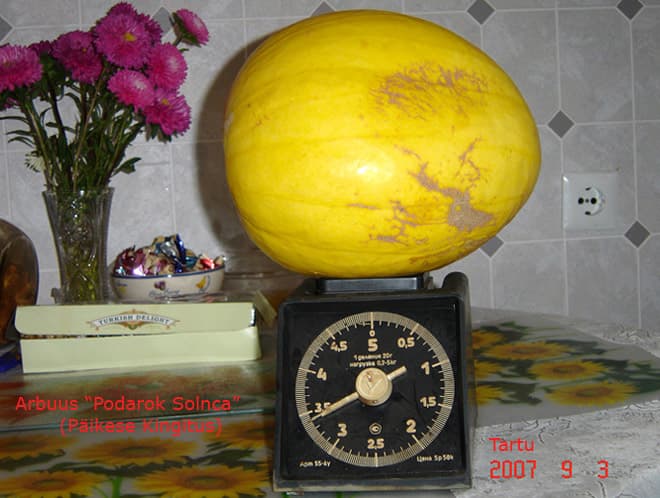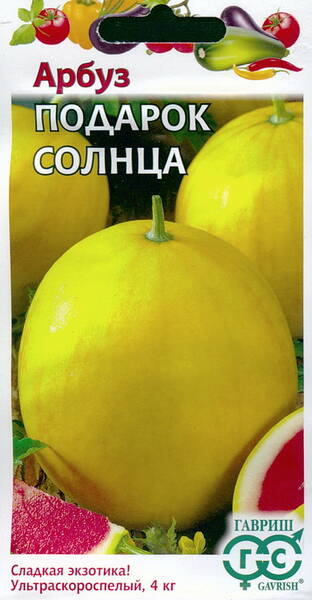A truly ripening variety in our northern conditions!
This is the first variety with golden yellow bark. Early ripening (67-73 days), with bright red, soft-grained, juicy and very sweet pulp. The sugar content reaches 10.4-11.0%. The plant is short-climbing, with fruits weighing 3.5–4.0 kg.
The variety has excellent taste. Productivity 7.0-9.0 kg/m2.
Sowing seedlings: at the end of April.
Planting seedlings: late May - early June at the age of 30-35 days.
The plants are tied to a trellis, all side shoots are removed to a height of 50 cm, and subsequent shoots are pinched over 1-3 leaves. Planting pattern: 70x150 cm.


Citrullus lanatus L.
* Melon and watermelon are the closest relatives of familiar garden crops: cucumber, zucchini, patisson.
You could say, uncle and aunt of the pumpkin family. And, of course, the relatives are not poor, but rather generous southern guests!
These large berry-like pumpkins contain about 10% sugar! In watermelon, sugars are mainly represented by fructose, and in melon - sucrose. But the presence of sugars is not in doubt, you just have to try the juicy pulp of a scarlet watermelon or the tender, melting in your mouth - melon!
And acids?.. Don't be surprised, but they are also present. Valuable organic acids: citric, malic, succinic are contained in both watermelon and melon. Watermelon also contains nicotinic acid (essential vitamin P), carotene, pectin substances, fiber. It has a high content of vitamin B9, contains thiamine (B1), riboflavin (B2).
Melon is also rich in ascorbic acid (vitamin C, which is three times more than in watermelon), as well as a specific substance - inositol, which prevents hair loss and the accumulation of fat and cholesterol in the liver.
Melon contains a lot of iron (2 times more than in chicken meat!), which makes it very useful for anemia.
Watermelon and melon fruits contain mineral salts of calcium, magnesium, sodium, sulfur, phosphorus, copper, cobalt, etc., which, although in small doses, are simply necessary for a person to function normally.
Proteins, which are also present in small quantities in the fruits, are represented by essential amino acids. So, melon and watermelon are not just sweet water, but a storehouse of useful substances!
How nice it is to enjoy, albeit not as huge as the southern ones, but your own juicy and sweet watermelons and melons... If certain conditions are met, these crops can be grown even in Siberia!












